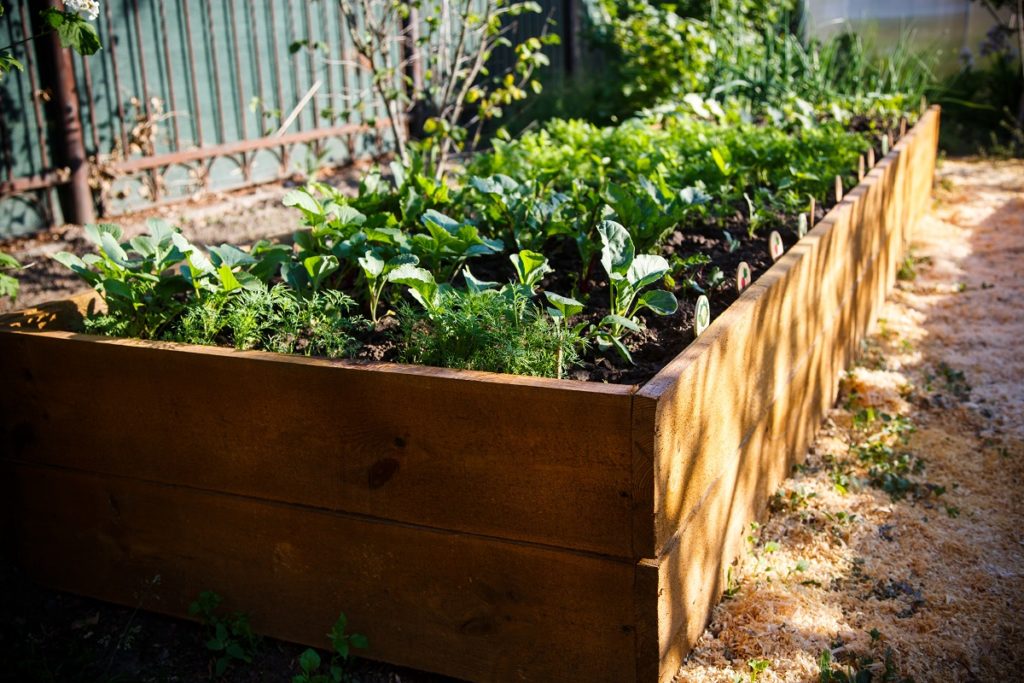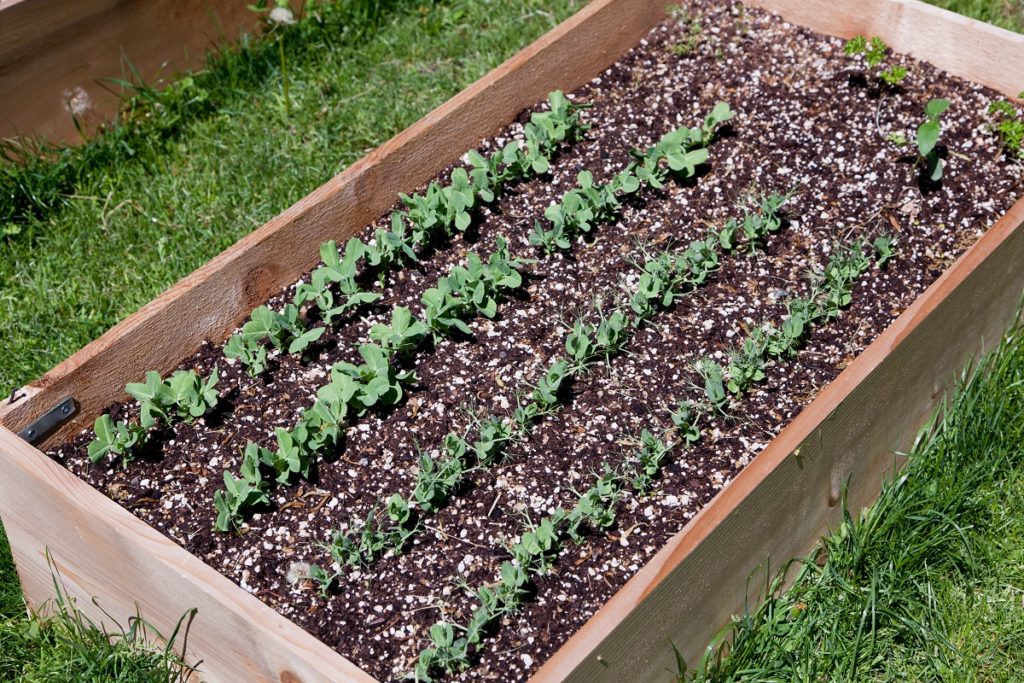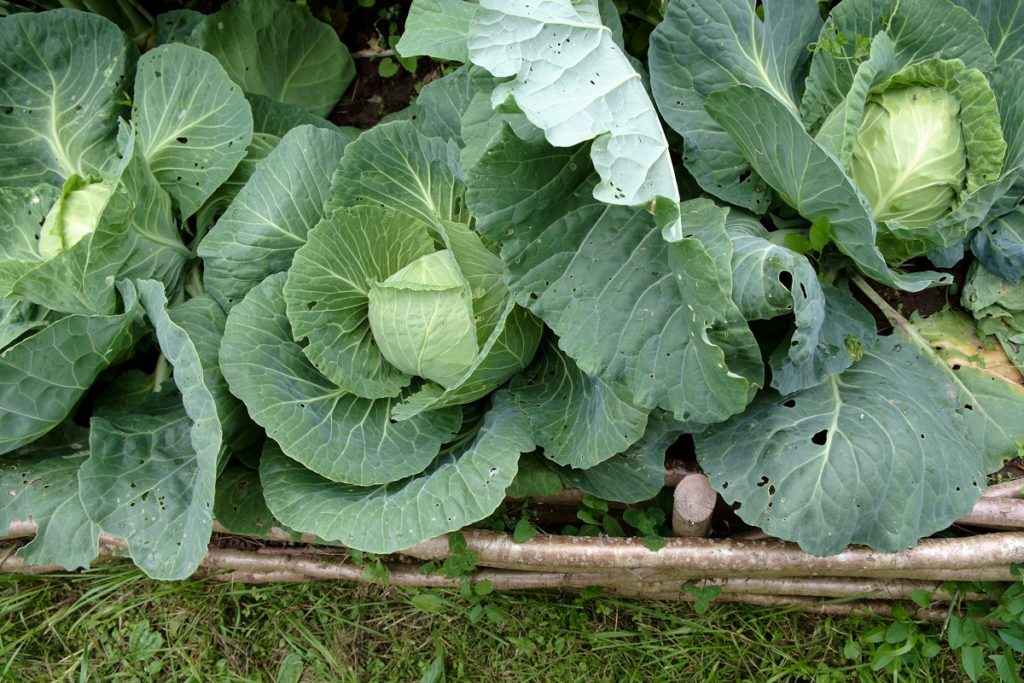Blog - Everything You Need to Start a Raised Bed Garden This Fall

Everything You Need to Start a Raised Bed Garden This Fall
Is vegetable gardening the hidden passion you’ve been putting off? The new hobby you’ve been dying to try? Let me guess—you vowed that you would start tomatoes in May but never got around to it, and now the growing season is coming to an end.
Good news: there’s still time to grow some delicious veggies this year in your very own raised garden bed. Let’s walk through everything you need to get set up.
Why raised garden beds are good for plants
First of all, it’s important to understand why raised bed gardens are worth setting up in the first place.
This style of gardening is excellent for plants (and by extension, new gardeners). Here’s why:
- Fresh soil mixture – If the soil in your yard is subpar (dry, rocky and unusable), you don’t have to remove it, but can instead use fresh soil in a contained bed right over top.
- Optimum drainage – Say goodbye to one of the most common plant problems: rotting roots. With raised beds, gravity pulls water away from the plants easily.
- Fewer weeds – Because the plants are not in the ground, you’ll have less problems with weeds, and those that do spring up will be easier to remove since the soil in the beds will be looser.
Plus, raised beds really allow you to maximize your space, meaning that all the nutrients in the soil get used and you can create very productive beds even in small yards or patios.

How to start a raised garden bed
Now that you know how much easier a garden bed will make gardening for you, it’s time to get started with the basics: the frame and the soil.
Picking and installing your container
The two main options for building a raised bed are to start from scratch with 2x4s or to purchase a kit. When you choose to go the DIY route, you have the benefit of designing it to be the perfect fit for your yard or patio. The downside, of course is not just the amount of time required, but also the tools. You’ll need to saw the wood according to your measurements and drill with galvanized wood screws.
Natural wood or composite raised garden kits are a great alternative. You can find them in home improvement stores, other big box retailers, and online. These allow you to get set up quickly and easily.
When choosing a kit, keep these needs in mind:
- Size – Minimum of 6 inches deep if you will be placing them on top of usable soil, and a minimum of 10 inches deep if you will be placing them on top of unusable soil or some other hard surface
- Material – If you prefer chemical-free organic gardening, you’ll want natural, untreated wood
- Installation – Different kits have different set-up requirements, so just be sure you have the required tools (if any)
Setting up the soil
As mentioned, one of the benefits of raised garden beds is you get to start over with the soil. You can mix together compost, manure, store-bought soil with slow release nutrients, and/or native soil from your yard. For vegetables, a mix of all of the above is ideal, but if you only have store-bought soil that’s fine too. Just make sure to start composting!
When mixing different soil types together, there’s a need-to-know trick. The soil should combine together when squeezed but then easily break apart when prodded with your finger. That’s how you know you’ve achieved the right balance between moist and dry.

What to plant in the fall
When you think of fall gardening, think salad greens. In just about any region in the US, you’ll discover that there are multiple options for September planting. Some of these in the colder climates include arugula, spinach, mustard greens, lettuce, kale, and bok choy. In warmer climates like the Southwest or Gulf Coast, you can also transplant broccoli and brussel sprout starts, or try planting beets, leeks and radishes from seeds.
But those are just the options for a short turn around. What about something that requires a little more patience? Both garlic and blueberries are excellent candidates for September planting. Garlic will grow over winter and can be harvested in the early spring. Blueberry transplants will have plenty of time to establish their roots over winter and be ready to produce in the early summer.
How to care for raised beds (it’s easy!)
Raised beds aren’t just great for plants. They’re also great for gardeners.
Weeding
Because beds are all about maximizing space, there is little room for weeds to grow. What space there is should be taken up purposefully by plants. For those pesky weeds that do crop up, it’s so much easier to remove them. You don’t have to bend down quite as far to pick the weeds, and depending on your set-up, you may be able to sit on the frame.
Quick tip: don’t lean on the soil when weeding or maintaining the plants. Otherwise, you’ll compact the soil, and loose soil is more conducive to plant growth.
Watering
Yes, it’s true that raised beds help reduce root rot by making drainage easier. But the beds also help plants retain moisture because of the containment. This means that your raised beds won’t dry out as quickly as a traditional row garden.

However, if your frame is particularly porous, it could dry out just as quick.
How do you know when to water again? When the soil is no longer moist 5 inches down. You can use a shovel or a screwdriver to test the moistness of the soil. After you’ve tested it for a few days, you should be able to calculate how often you need to water, whether that’s every other day or every three days. Regardless of how often you need to water, it’s best to do so in the morning, leaving time for the moisture to evaporate and to prevent rot.
Who knew it could be so easy? Aren’t you glad you aren’t going to put off gardening for another year? You can do a quick start on raised bed gardening with a wooden kit, some delicious salad greens, and a little bit of commitment. You’ll be amazed at how rewarding your new hobby is and how tasty the results! Let us know your raised bed tips in the comments below.
No Description
Leave a Comment
You must be logged in to post a comment.